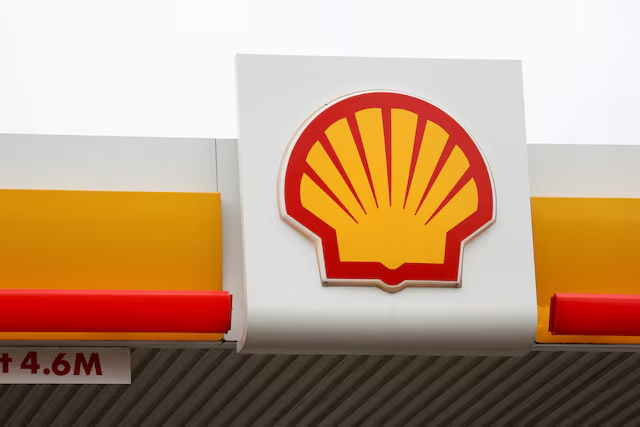…as Shell Greenlights Offshore HI Project in Strategic Push for Gas Investment
In a landmark announcement for Nigeria’s Oil & Gas sector and the current administration’s drive to attract foreign investment in the sector, Nigeria secured a $2 billion final investment decision (FID) with Shell for a major offshore gas development. Shell announced this investment alongside its joint venture partner, Sunlink Energies, formally approving the development of the HI offshore gas project. These moves highlight a resurgent trend of investment in Nigeria’s gas space and reinforce the momentum behind the country’s renewed push for energy sector revitalization.
According to a State House press release, the $2 billion commitment is for a non-associated gas project in the shallow offshore HI Field, operating under OML 144. The project is expected to deliver approximately 350 million standard cubic feet of gas per day (mmscf/d) from 2028, representing a significant addition to Nigeria LNG’s feedstock. The government described it as Nigeria’s third major upstream FID in 18 months, coming after earlier FIDs in the Ubeta gas project and Bonga North deepwater project. The same release noted that the combined major upstream investment commitments have now surpassed $8 billion since President Bola Tinubu took office.
Shell will hold a 40 percent interest, while Sunlink holds 60 percent, in the field discovered in 1985 and located some 50 kilometers offshore in roughly 100 meters of water. Production is expected to start before the decade ends, with peak output directed to Nigeria LNG.
The State House statement emphasized that the HI FID was unlocked via a suite of reforms championed by the Tinubu administration. It cited Presidential Directive 40, which introduced a competitive fiscal regime for non-associated gas fields in shallow offshore and onshore jurisdictions. The statement also credited improvements in approval cycle times, clarity in contracting regimes, and fiscal incentives for investor confidence.
To understand the significance of these developments, it helps to situate them in Nigeria’s recent investment climate and gas frontier history. For years, Nigeria’s gas potential was underleveraged. The country is endowed with vast gas reserves—around 210.54 trillion cubic feet (TCF) in proven resources as disclosed by NUPRC. Of that, 109.51 TCF is non-associated gas, and approximately 55 TCF remains uncommitted to monetization projects.
In previous decades, upstream oil projects dominated investment, while gas was often flared or neglected due to infrastructure, regulatory and fiscal constraints. But starting circa 2023, the government repositioned gas as the backbone of Nigeria’s energy transition and export ambition. The Ubeta gas field secured an FID, and the Bonga North deepwater project likewise moved forward, helping to set the stage for broader investor reengagement.
Under the current framework, the Shell HI project becomes both a test case and a keystone. If delivery meets expectations, the project will not only contribute to LNG feedstock volumes but also support domestic gas supply, expanding access for power generation, industrial users, and LPG markets. The State House release asserts that the HI and Ubeta FIDs can provide up to 15 percent of NLNG’s total feed gas needs, through Trains 1 to 7.
Yet, challenges remain. Project execution will depend heavily on long lead infrastructure: subsea wells, pipelines, gas processing facilities, and tie-ins to Bonny Island’s LNG facility. Any delays or cost overruns could slow gas delivery targets. Moreover, Nigeria must manage coordination between upstream investors, state agencies, and the joint venture stakeholders of NLNG, in which NNPC holds 49 percent alongside Shell (25.6 percent), TotalEnergies and Eni.
Another test is the regulatory and fiscal environment’s durability. Past investment cycles in Nigeria have faltered when policies shifted, local stakeholder disputes flared, or uncertainty crept into approval processes. In this sense, both government and industry will be judged by their ability to shield ongoing ventures from disruption.
The HI project carries signals to both local and foreign capital: that Nigeria can attract major offshore gas investments, and that the reforms in framework and incentives are bearing fruit. For Shell, it is a strategic reaffirmation of its African gas portfolio, especially as it exits certain onshore assets and doubles down on deepwater and integrated gas play.
From an investment history perspective, Nigeria’s upstream sector has seen rising activity in FIDs recently. In under one year, over $8 billion in deepwater and gas upstream commitments have been unlocked, according to industry reporting. This resurgence contrasts sharply with a prior era of stagnation, giving credibility to assertions that Nigeria’s energy reform path is gaining traction.
If successful, the HI project will help address two critical objectives: increasing Nigeria’s role as a key LNG supplier globally, and supporting domestic energy security by redirecting gas into the national grid, industrial parks, and household use. The timing is advantageous, given global demand for cleaner energy sources and Africa’s contest to attract capital away from mature basins.
Samuel Aina

